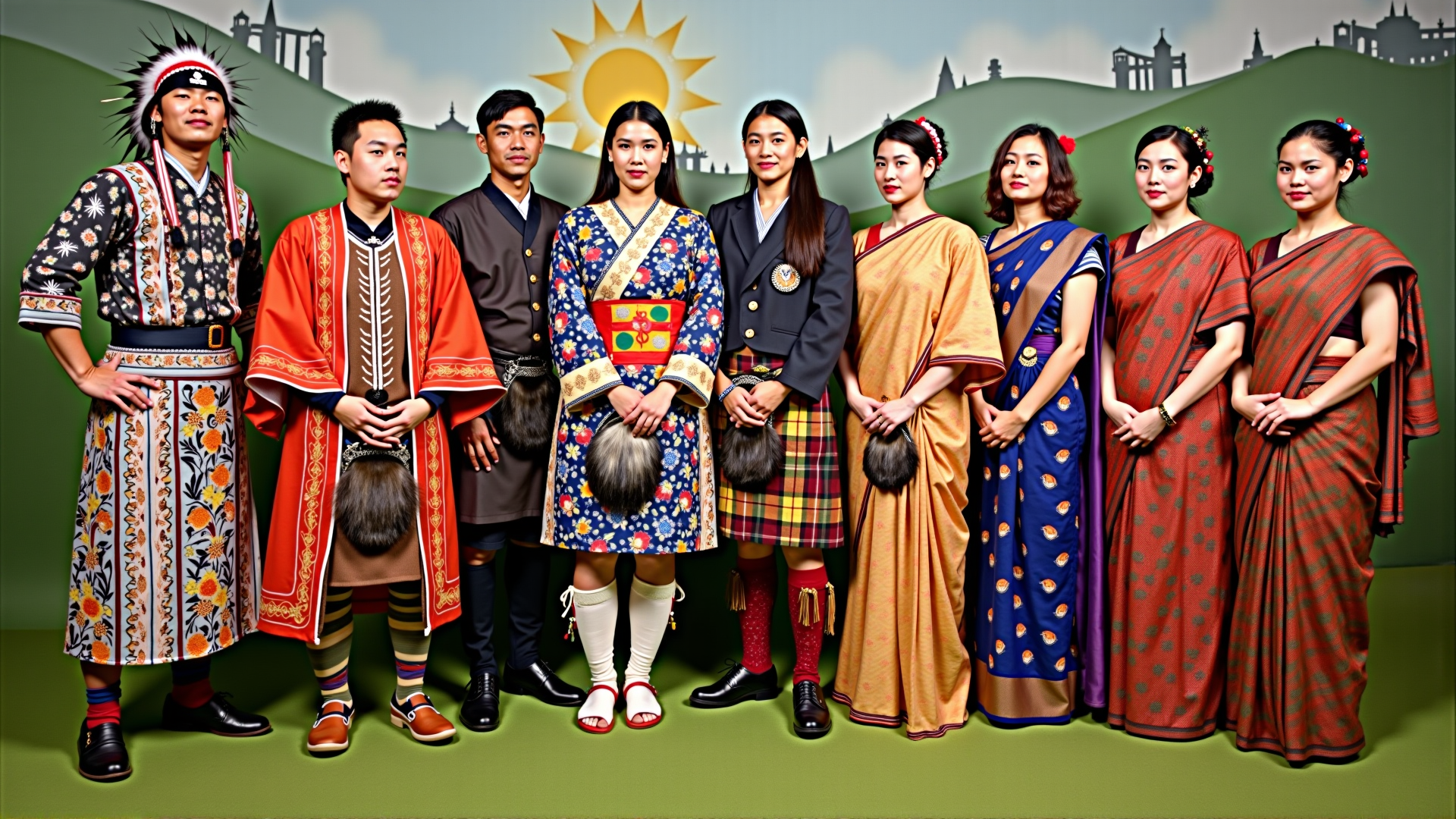Every thread and pattern woven into traditional costumes tells a story, carrying with it the weight of history and the essence of cultural identity. These garments offer a vivid window into the past, reflecting the societal values, traditions, and artistry of the communities that craft and wear them. Exploring these colorful outfits from various cultures reveals not only unique styles but also a shared human experience expressed through clothing.
In Japan, the kimono stands as an enduring symbol of heritage. This elegant garment, characterized by its straight seams and wide sleeves, has undergone changes throughout the centuries, yet its fundamental shape remains the same. The choice of fabric, color, and motifs often signifies the wearer’s age, marital status, or the season. For instance, cherry blossom patterns declare the arrival of spring, while cranes convey wishes for long life and happiness.
In West Africa, the dashiki and boubou represent the rich cultural tapestry of the region. With vibrant colors and embroidered necklines, these garments are more than just attire; they are a way of celebrating identity and pride. Typically worn during important ceremonies and events, the fabrics used, such as kente cloth from Ghana, are notable for their elaborate designs that carry symbolic meanings tied to proverbs, history, and personal values.
Traveling to Eastern Europe, one might encounter the intricate embroidery of the Ukrainian vyshyvanka. Historically, these embroidered shirts and blouses served both an aesthetic and protective purpose, believed to ward off evil spirits. Each region boasts unique embroidery patterns and colors, which often tell stories or signify specific community affiliations. For many Ukrainians, the vyshyvanka is a vibrant testament to cultural preservation and resistance.
In the Andes of South America, traditional garments such as the Peruvian poncho or Bolivian chullo bring warmth and cultural expression. Made from alpaca or llama wool, these vibrant items not only provide protection from the harsh mountain climates but also incorporate motifs from ancient Incan civilizations. These patterns often integrate elements of nature and cosmology, reflecting the deep connection indigenous people maintain with their environment.
The complexity and richness of traditional costumes also extend to the intricate saris of India. These long pieces of fabric, draped in various styles, represent diverse regional traditions. In the state of Kerala, the pristine white and gold kasavu sari is synonymous with elegance and simplicity, often worn during festivals and weddings. Meanwhile, the vibrant silk saris of Banaras, with their exquisite gold and silver brocade work, are a celebration of intricate artistry and craftsmanship.
Each traditional costume carries the spirit of the people who wear them, transcending mere functionality to become treasured symbols of identity and continuity. As we explore these diverse styles, we not only appreciate their beauty but also gain insight into the enduring narratives of cultures across the world. Through their colors, patterns, and fabrics, these garments connect us to the rich tapestry of human history and the ongoing conversation of cultural identity.
